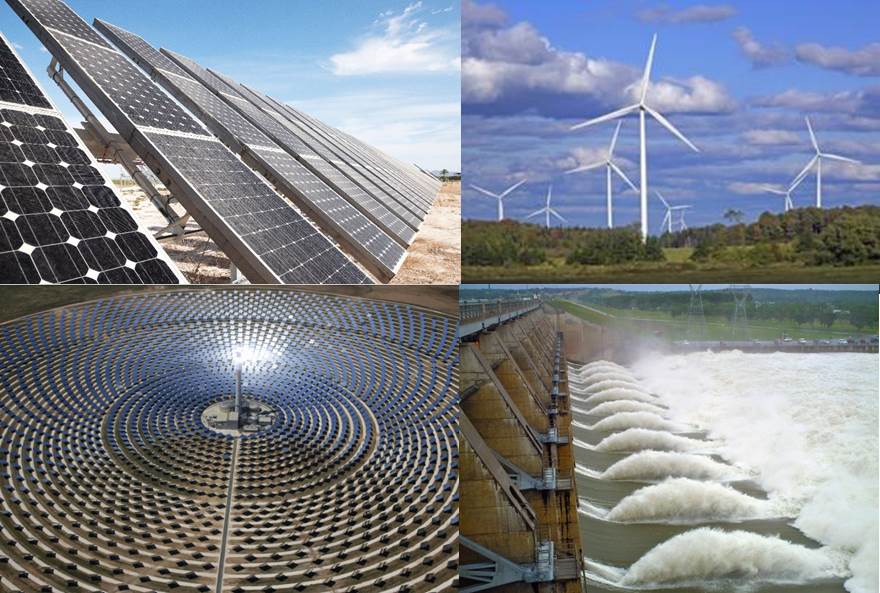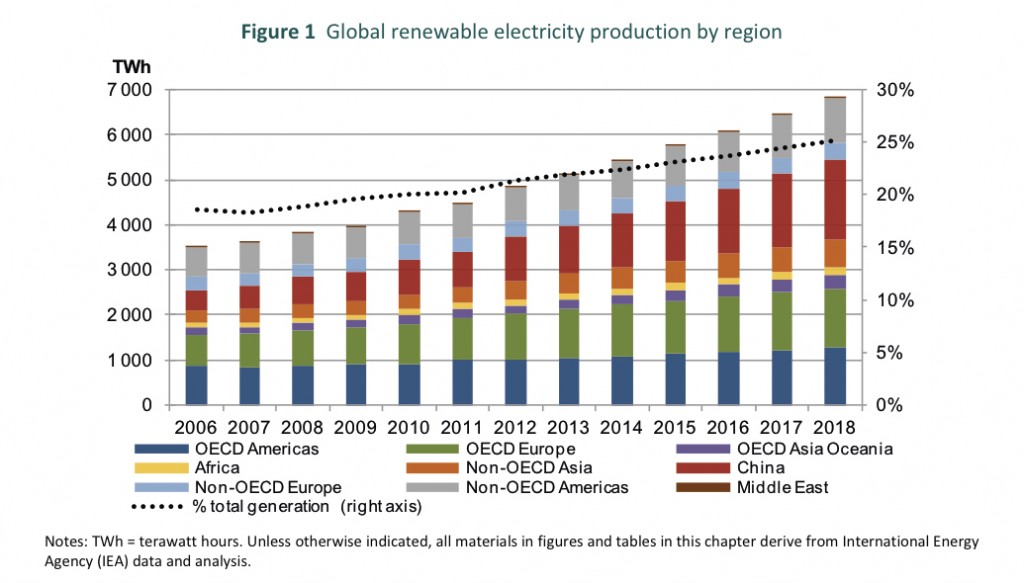The IEA, International Energy Agency, in its latest report forecasts that wind and solar power projects will, by 2016, surpass natural gas power generation. This will happen even as government-supported subsidies get removed. The reasons why we are told is that wind and solar are getting cheaper to produce and that we are seeing viable technical solutions appearing in the market to let utilities hook these energy generators into existing grids and compensate for the variability. But as I previously reported solar and wind may be beating out natural gas but not coal which continues to grow in usage despite the impact its burning has on greenhouse gas emissions.
If you are interested in understanding how generating technologies are rated in terms of costs and capacity, I refer you to a U.S. Energy Information Administration annual report which provides detailed explanations. The report compares what it calls the “levelized” costs of different technologies. But purely on capacity factors, conventional coal-fired power plants operate at 85% capacity, far better than renewables. Onshore wind is rated at 34%, offshore wind at 37%, solar photovoltaic at 25% and solar thermal at 20%. Even hydroelectric power capacity ratings are no better than 52% on average.
That remains the big problem for renewables. Here on Earth the wind doesn’t always blow and the Sun doesn’t always shine. Streams don’t always flow at the same rate with reservoirs behind dams getting silted up slowly reducing power generation capacity. Offsetting this is the renewable advantage, once capital costs are removed, the cost of fuel is zero. That still is not enough to offset the economic advantages of coal which remains a cheap fuel without a carbon tax, and therefore, more than cost competitive with any renewable.
But why would renewables be beating out natural gas? It is abundant, particularly with the rise in reserves of shale gas from fracking. The answer appears to be subsidies. But once subsidies disappear will industry still want to build wind and solar? Or will governments create playing conditions that continue to favour investment in renewables even without subsidies?
In the last week the President of the United States announced a new climate change policy largely driven by regulatory initiatives. And China announced a staged carbon cap and trade program for its major cities with plans to put a national program in place within three years. Are these the initiatives that will wean us from cheap coal and help us reduce the growth in carbon emissions?










